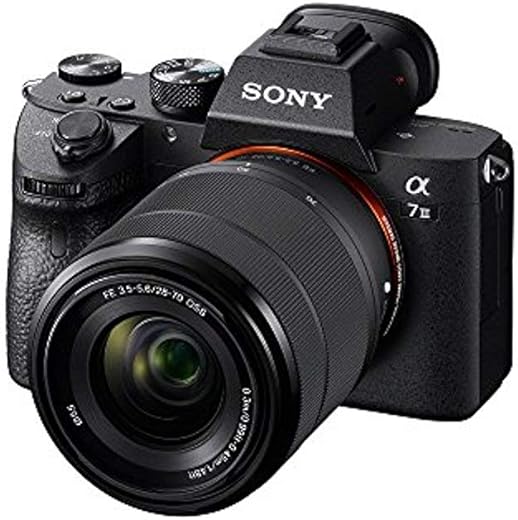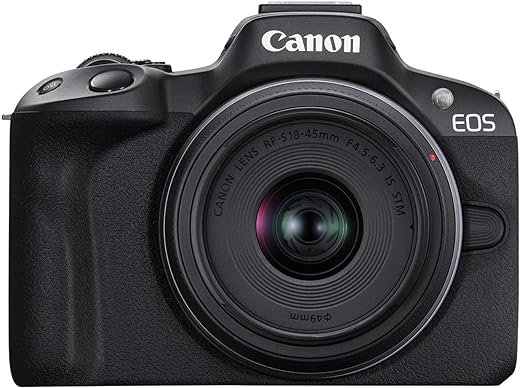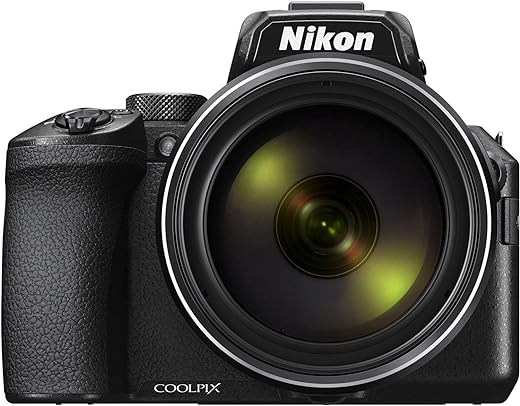When comparing the renowned ‘Sony A7 III ‘ with the newer ‘Sony A7 IV’, there are key differences and upgrades to consider. From improved features to enhanced performance, both cameras offer unique advantages for photographers looking to elevate their craft. Let’s dive into a detailed analysis to help you choose the best option for your photography needs.
Professional Photography
The Sony a7 III (ILCEM3K/B) Full-frame Mirrorless Camera with 28-70mm Lens delivers exceptional image quality with a 24.2MP full-frame sensor and up to 10fps shooting speed. The camera also features advanced autofocus technology with 693 phase-detection and 425 contrast AF points for precise subject tracking and coverage.
Professional Photography
The Sony Alpha 7 IV camera offers exceptional image quality with its 33MP full-frame sensor and powerful BIONZ XR processor. It delivers stunning 4K video capabilities and beautiful color reproduction with the S-Cinetone color profile, making it a versatile and top-performing choice for photographers and videographers alike.
Sony A7III
Image Sensor
24.2MP BSI Full-frame Image Sensor
Image Processing Engine
1.8X readout speed Advanced 24.2MP Back-Illuminated 35mm Full-frame Image Sensor
Video Recording
Up to 10fps Silent or Mechanical Shutter with AE/AF tracking
Autofocus Points
693 phase-detection / 425 contrast AF points w/ 93% image coverage
Color Profile
Not specified
Sony A7 IV
Image Sensor
33MP full-frame Exmor R back-illuminated CMOS sensor
Image Processing Engine
8x more powerful BIONZ XR image processing engine
Video Recording
Up to 4K 60p 10-bit 4:2:2 w/ full pixel readout in all recording formats
Autofocus Points
Not specified
Color Profile
Beautiful color expression made simple with S-Cinetone color profile
Sony A7III
Sony A7 IV
Sony A7III
Sony A7 IV
Feature comparison chart


Sony a7 III
- USPs:
- Excellent low-light performance
- Impressive battery life
- Extensive lens compatibility
- Pros:
- High-quality image output
- Advanced AF system
- Cons:
- Lower resolution sensor
- Limited video capabilities
- Use-cases:
- Ideal for photography enthusiasts
- Great for portrait and landscape photography
Sony Alpha 7 IV
- USPs:
- High-resolution sensor for detailed images
- Superior video recording capabilities
- Pros:
- High-resolution sensor
- Advanced video features
- Cons:
- Slightly higher price point
- Average battery life
- Use-cases:
- Suitable for professionals and videographers
- Perfect for content creators and filmmakers
Conclusive Assessment
The Sony a7 III excels in low-light performance and battery life, making it a solid choice for photography enthusiasts. On the other hand, the Sony Alpha 7 IV shines with its high-resolution sensor and advanced video features, catering more to professionals and content creators.
Final Summary
For those prioritizing photography and seeking good battery life, the Sony a7 III is a reliable option. However, if you value high-resolution images and top-notch video capabilities, the Sony Alpha 7 IV is the way to go, especially for professionals and videographers. Choose based on your specific needs and preferences.
Comparing Sony Alpha A7 III and A7 Mark IV
Comparing Sony Alpha A7 III Full-Frame Mirrorless Camera vs Sony Alpha A7 Mark IV Camera
When deciding between the Sony Alpha A7 III and the Sony Alpha A7 Mark IV, there are several key factors to consider to make an informed choice. Below are some general guidelines and key factors to help you compare the two cameras effectively:
Key Factors to Consider:
- Resolution and Image Quality:
- A7 III: 24.2MP
- A7 IV: 33.0MP
- Autofocus Performance:
- A7 III: 693 phase-detection AF points
- A7 IV: 759 phase-detection AF points
- Video Capabilities:
- A7 III: 4K video recording up to 30fps
- A7 IV: 4K video recording up to 60fps
- Processor and Speed:
- A7 III: BIONZ X image processor
- A7 IV: BIONZ XR image processor
- Body Design and Build:
- A7 III: Weather-sealed magnesium alloy body
- A7 IV: Enhanced weather sealing and improved ergonomics
- Battery Life:
- A7 III: Approximately 610 shots per charge
- A7 IV: Approximately 670 shots per charge
General Guidelines:
- Usage Requirements:
- Consider your specific photography needs (e.g., portrait, landscape, sports) to determine which camera aligns better with your shooting style.
- Budget Consideration:
- Evaluate the price difference between the two models and weigh it against the features that matter most to you.
- Future-Proofing:
- Assess whether the additional features of the A7 IV justify the potential investment for future use and technological advancements.
- Compatibility and Lens Ecosystem:
- Check the compatibility of existing lenses and assess the availability of lenses for both camera models within the Sony ecosystem.
By carefully considering these factors and guidelines, you can confidently choose between the Sony Alpha A7 III and Sony Alpha A7 Mark IV to suit your photography requirements and preferences.
Choosing the Right Sony Alpha A7 Camera: FAQs
Certainly! One key difference between the Sony A7 III and A7 IV is the sensor resolution. The A7 III has a 24.2 megapixel sensor, while the A7 IV boasts a higher resolution with a 33 megapixel sensor, resulting in potentially sharper and more detailed images. Another significant difference is the autofocus system – the A7 IV features an updated and more advanced autofocus system compared to the A7 III, providing improved performance, especially for fast-moving subjects. Additionally, the A7 IV offers enhanced video capabilities, including 4K recording at higher frame rates, making it a compelling choice for both photographers and videographers.
The Sony Alpha 7 IV offers several new features that are not available in the Sony a7 III. Some of the key differences include:
- Higher resolution sensor: The A7 IV has a 33-megapixel sensor compared to the 24-megapixel sensor in the A7 III, providing better image quality and more detailed photos.
- Improved autofocus system: The A7 IV features a more advanced autofocus system with 759 phase-detection and 425 contrast-detection AF points, offering better tracking and focusing capabilities.
- Faster continuous shooting speed: The A7 IV can shoot at up to 10 frames per second compared to the 9fps in the A7 III, allowing for capturing fast-moving subjects more effectively.
- Updated video capabilities: The A7 IV supports 4K video recording at up to 60fps with 10-bit 4:2:2 color depth, offering enhanced video quality and flexibility for videographers.
- Vari-angle LCD screen: The A7 IV comes with a vari-angle LCD screen that can be tilted and rotated for easier framing in different shooting situations, which is not available in the A7 III.
These are just a few of the enhancements that the A7 IV offers over the A7 III, providing users with improved performance and versatility for their photography and videography needs.
Yes, there is a significant improvement in image quality with the Sony A7 IV over the A7 III. The A7 IV features a new 33-megapixel sensor compared to the A7 III’s 24-megapixel sensor, providing higher resolution and better overall image quality. Additionally, the A7 IV has improved processing capabilities, resulting in better dynamic range, low-light performance, and color accuracy. Overall, the A7 IV offers noticeable enhancements in image quality compared to its predecessor, the A7 III.
When comparing the autofocus system between the Sony a7 III and the Sony Alpha 7 IV, it’s important to note that the Alpha 7 IV offers significant improvements in autofocus performance. The Alpha 7 IV features a more advanced and faster hybrid autofocus system compared to the a7 III, providing better subject tracking, eye autofocus, and overall focus accuracy. This upgraded autofocus system allows for better performance in various shooting scenarios, making it a notable improvement over the a7 III.











5 thoughts on “Sony A7 III vs Sony A7 IV”
Great comparison between the two cameras, very informative!
Overall, a well-written article that helped me decide which camera suits my needs better.
The image quality examples provided really help in understanding the differences.
I wish there was more focus on video capabilities in the comparison.
I appreciate the detailed analysis of the features and improvements.
Comments are closed.